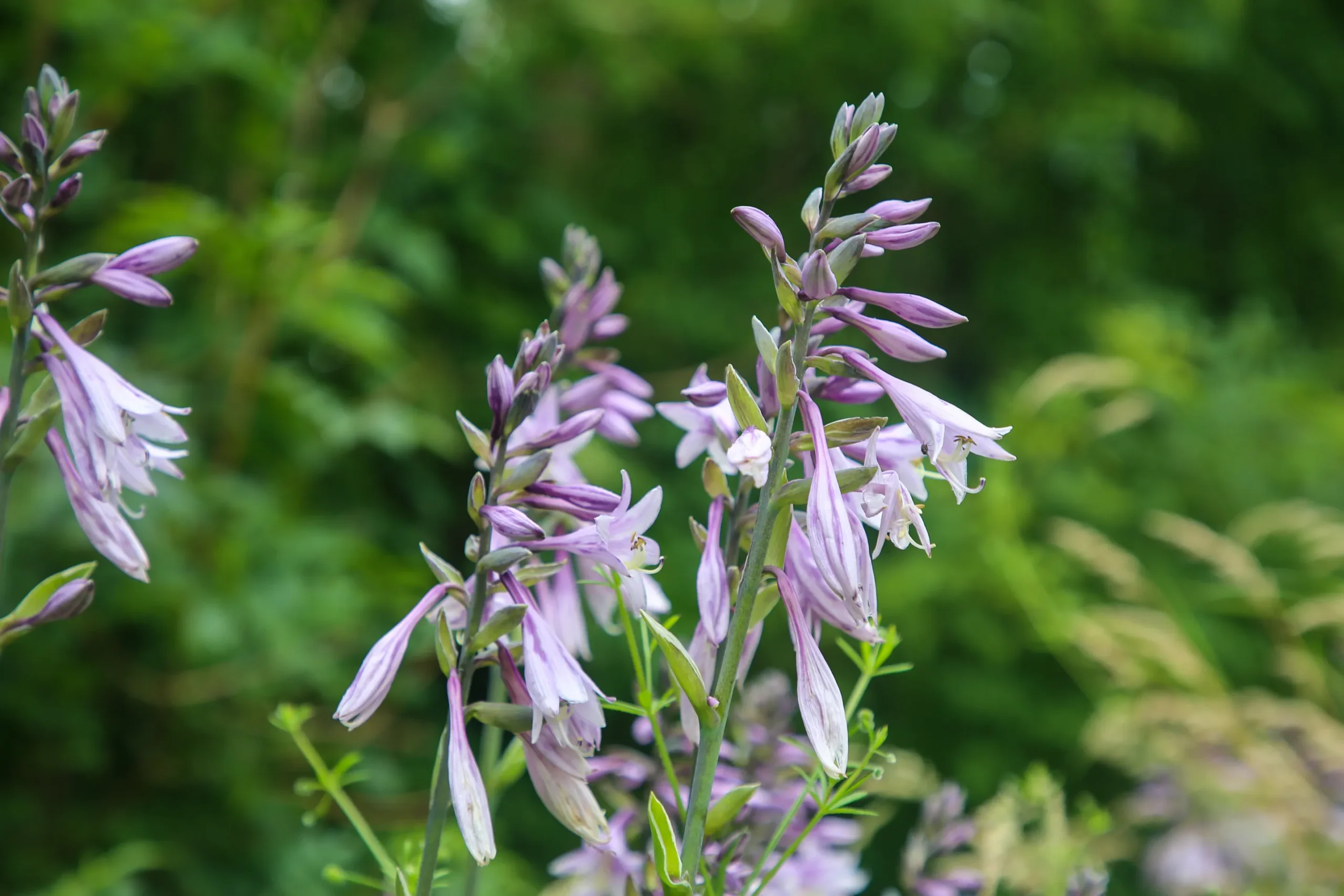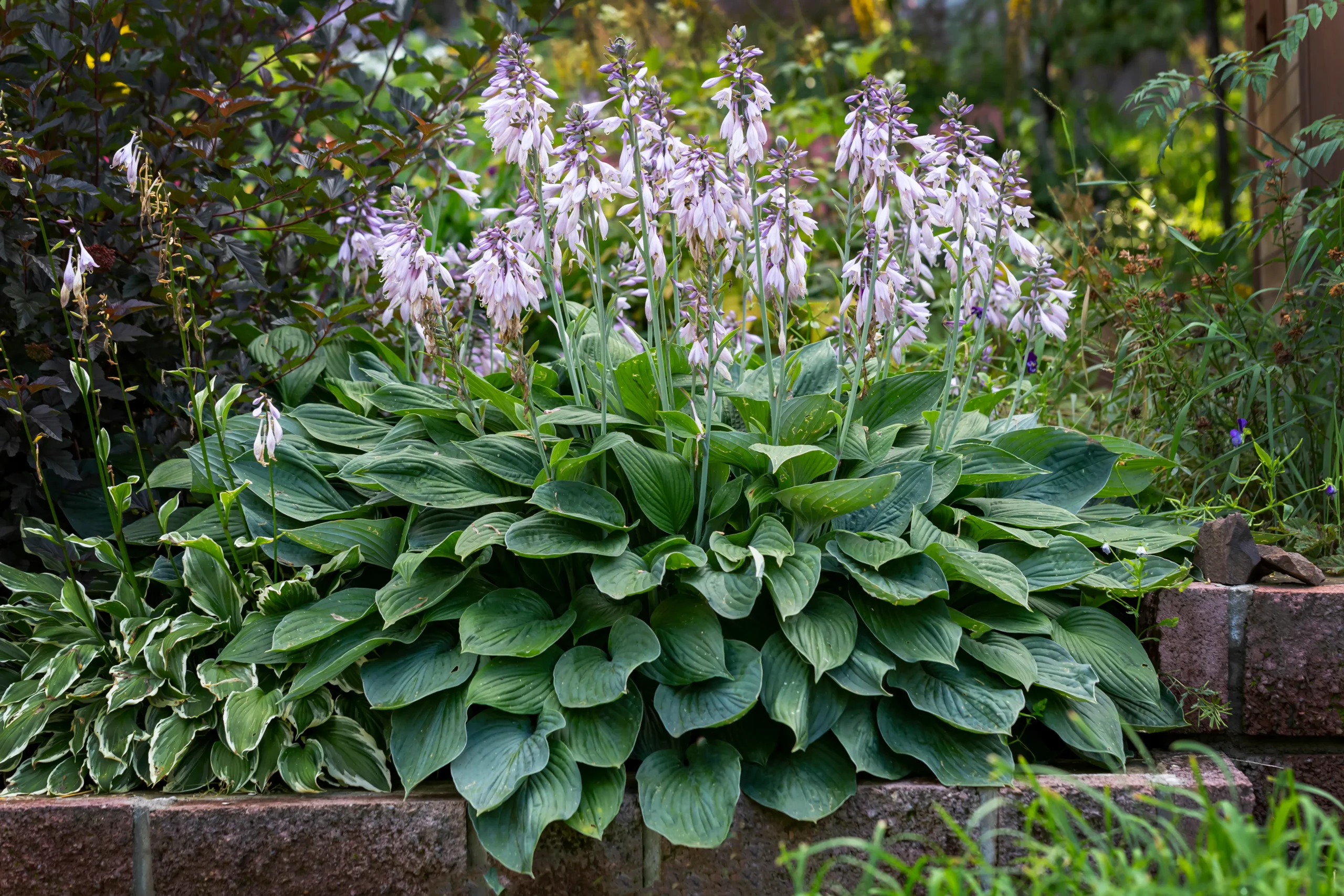Family: Hosta
Type: Perennial
Other Common Name: Plantain Lily, Funkia

The Blue Cadet Hosta is a charming and compact perennial known for its heart-shaped, blue-green leaves and mounds of foliage that add texture and color to shady garden spots. This smaller variety of Hosta grows to about 15 inches in height and spreads up to 36 inches, making it an ideal choice for border plantings, ground covers, and container gardens. Its lavender flowers appear in mid to late summer, rising on stalks above the foliage and attracting pollinators like bees and hummingbirds to the garden.
Adaptable and easy to care for, the Blue Cadet Hosta thrives in partial to full shade, preferring cooler conditions found under the canopy of trees or on the north side of buildings. Its resistance to pests, apart from the occasional slug, makes it a durable addition to any garden. The lush, dense foliage of the Blue Cadet also provides excellent ground cover, helping to suppress weeds and maintain soil moisture.
Incorporating Blue Cadet Hostas into your landscape brings a splash of cool blue to the garden palette, especially effective in creating serene and visually cooling spaces. Whether planted en masse for a sea of blue or used as accent plants among brighter flowers, they offer versatility and beauty with minimal maintenance requirements. Their durability, coupled with their decorative appeal, makes Blue Cadet Hostas a favorite among gardeners looking for reliable shade-loving plants.
Hardiness Zone: 2a-9b
Moisture Preference: Average to moist
Sun Needs: Partial shade to shade
Growth Rate: Slow
Average Height (feet): 1.5
Average Spread (feet): 3
Average Life Span (years): 10
Form: Over mound
Flower Color: Purple
Flower Shape: Tubular
Bloom Season: In mid summer
Foliage Color: Green
Foliage Shape: Heart
Creating a tranquil shade garden is effortless with Blue Cadet Hostas. Their compact size and attractive foliage make them perfect for underplanting beneath taller shade trees or shrubs, where they can fill in the space with their dense leaves. Planting them along pathways or garden borders not only defines these areas but also adds interest with their textured foliage and delicate flowers.
For a cohesive garden design, combine Blue Cadet Hostas with other shade-loving perennials such as ferns, astilbes, and bleeding hearts. The contrast between the Hosta’s blue-green leaves and the varied greens, reds, and pinks of these companions creates a lush, layered look that enhances the overall appeal of the garden. Additionally, Blue Cadet Hostas can be planted in containers to decorate shaded patios, decks, or balconies, bringing their cool elegance to outdoor living spaces.
Incorporating Blue Cadet Hostas into themed gardens, such as woodland or fairy gardens, adds a touch of enchantment with their foliage and flowers providing a backdrop for imaginative garden elements. Their ability to thrive in shade and their minimal care requirements make them ideal candidates for creating magical and inviting garden nooks that invite relaxation and contemplation.

The Blue Cadet Hosta's natural affinity for shade and its forest-like appearance make it a perfect fit for woodland garden settings, enhancing the naturalistic feel.
In Japanese gardens, where every element is chosen for its form and symbolism, the Blue Cadet Hosta contributes tranquility and grace with its mounded shape and soft-hued leaves.
Though cottage gardens are often sun-filled, the Blue Cadet Hosta can be used in the shadier spots to provide contrast with its cool-colored foliage against brighter flowers.
Plant Blue Cadet Hostas in groups under a canopy of trees to create a seamless ground cover that weaves through the garden, providing unity and texture.
Use them as border plants along shaded walkways, where their lush foliage can be appreciated up close, enhancing the journey through the garden.
Mix Blue Cadet Hostas with variegated or golden-leaved plants in a shade garden to highlight their blue-green leaves, creating a visually striking palette.
Select our pre-made garden layouts to create a landscape that’s uniquely yours. Simple, smart, and customizable!
In spring, the Blue Cadet Hosta emerges from the soil, its leaves unfurling to catch the dappled sunlight, signaling the start of the growing season.
Summer showcases the Blue Cadet at its peak, with vibrant foliage beneath which lavender flowers bloom, adding a pop of color to the shade garden.
As fall approaches, the leaves of the Blue Cadet Hosta may take on a yellow hue before dying back, contributing to the garden's autumnal color scheme.
In winter, the Blue Cadet Hosta retreats below ground, leaving a bare spot that anticipates the return of greenery in the spring.
Blue Cadet Hostas excel in shaded areas, particularly under the canopy of trees or on the north side of buildings where they receive filtered sunlight.
They thrive in partial to full shade. Avoid placing them in direct afternoon sun, which can scorch their delicate leaves.
Plant in well-draining, nutrient-rich soil. They prefer slightly acidic to neutral pH but are quite adaptable.
Space Blue Cadet Hostas about 20 inches apart. This allows room for growth and air circulation, reducing the risk of disease.
Early spring or fall is ideal, as cooler temperatures help them establish without the stress of heat.
Dig a hole as deep and twice as wide as the root ball. Place the plant in, fill gently with soil, and water thoroughly.
Maintain consistently moist soil, especially in the first year. Water deeply once a week, more frequently in extreme heat.
Apply a balanced, slow-release fertilizer in early spring to encourage vibrant growth and flowering.
Remove dead or damaged leaves anytime and cut back spent flower stalks after blooming to keep plants tidy.
Clear away any debris, apply mulch to retain moisture, and fertilize to support the season's growth.
Continue regular watering, especially in dry spells, to keep leaves lush and prevent wilting.
Prepare plants for dormancy by reducing watering and cleaning up any fallen leaves to deter pests.
Blue Cadet Hostas are hardy, but in colder regions, a layer of mulch can provide extra protection against freeze-thaw cycles.
Use organic slug bait or barriers like crushed eggshells around plants. Keeping the area clear of debris also helps reduce slug habitats.
Yes, they can be divided in early spring or fall. This helps rejuvenate older plants and is a cost-effective way to expand your garden.
No, they are perennials and will return each year, growing larger and more beautiful with time. Regular division every 3-5 years can help maintain their vigor.
Sign up below to get exclusive deals, discounts, and new plant collections—delivered straight to your inbox! Plus, stay inspired with the latest gardening tips, landscaping trends, and DIY garden ideas. Start growing with us today!
A big thank you for subscribing to the PBN Design newsletter.
We're thrilled to have you join our community. Get ready for exciting updates, insightful content, and more delivered straight to your inbox.
Stay tuned!
Go backA big thank you for subscribing to the PBN Design newsletter.
We're thrilled to have you join our community. Get ready for exciting updates, insightful content, and more delivered straight to your inbox.
Stay tuned!
Go back